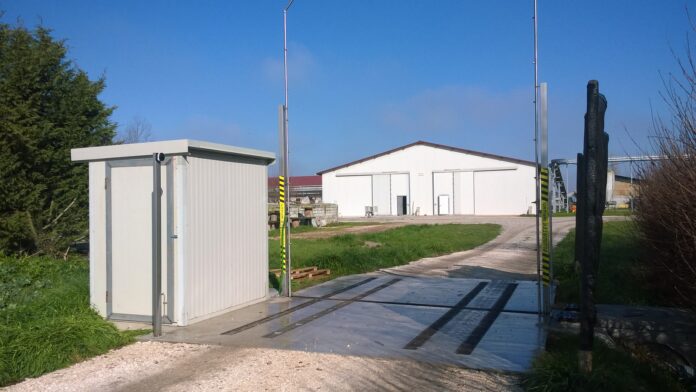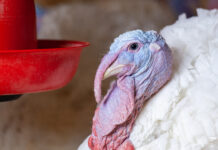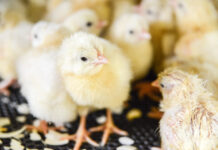
By biosecurity we mean those measures aimed at reducing the risk of introducing and spreading infectious agents on farms, i.e. bio-exclusion and bio-containment measures.
Luigi Montella, Vet Tech.
To implement adequate biosecurity measures, there are three aspects to consider: the geographical position, the structures of the buildings including the outbuildings and the farm procedures and the routine operational activities.
As a general rule, to ensure a good level of biosecurity it is necessary to isolate the farms, through both physical and procedural barriers; thorough cleaning at the end of the cycle to remove any remaining pathogens and to further disinfect at the end of the cleaning operations. To this end, the cooperation of all staff is of fundamental importance as anyone in any time can be responsible for the introduction of pathogens, with devastating consequences.
Just consider, for example, the Avian Influenza case: it is a virus that is unstable in the environment, which therefore survives in the shed only if it remains in organic material that protects it. With this protection, especially in cold and humid environments, the survival of the virus increases. The first hosts of the flu virus are generally wild waterfowl and from there it is easily transmitted to domestic ducks, which are susceptible to infection. Therefore situations where domestic birds and ducks are contiguous will pose a high risk of transmission of the virus. In order of sensitivity among domesticated birds quails rank first, then turkeys and finally chickens. It is therefore a wide-ranging transmission mechanism, which sees the passage of the virus from migratory wild birds to intermediate species (the so-called “bridge” species) which in turn act as a vehicle for the transmission of the virus to commercial poultry.
Naturally, in the scheme of things, a series of various factors are involved such as environmental persistence (cold climate), the frequency of migrations and the presence or absence of a good biosecurity system. The virus can be transmitted by a practically infinite series of situations and objects such as contaminated equipment; permanent farm staff; other company employees; casual workers (such as personnel who come to the farm for vaccinations); trucks for transporting feed; litter of previous cycles, as well as fecal material; dead livestock; new stock being housed; insects or other animals, but also water and obviously from any other nearby farms.
The principles of biosecurity
To ensure a good level of biosecurity it is necessary to intervene in these fields:
- Perimeter control, with fencing and buffer areas.
- Staff training – workers must be constantly trained and must wear clean clothing. It is also necessary to restrict entry to visitors.
- Equipment and vehicles – limit traffic and sanitize all incoming vehicles.
- Domestic and wild animals, rodents and insects must be limited. Dead birds must be collected, eliminated and reported carefully and promptly; and attention must be paid to new flock placements.
- Water – it is essential to always check water sanitation.
- Feed and new litter must always be carefully checked.
- Audit programme – checks must be carried out regularly on the implementation of biosecurity measures.
At the basis of any biosecurity plan there is always the concept of having secure fencing and an entrance buffer zone which must be created and guaranteed on and in each farm.
Staff, having become aware of the health risks for the livestock and of the need to protect the flock from illness, must avoid contact with other poultry, both commercial and domestic flocks. Staff training to reinforce these measures is carried out through demonstrations, presentations, training, including online, videos and field checks, constantly validated by audits.
These are measures that do not cost much but which have a good effect. It should be noted that in fact, not all the recommended or mandatory measures have the same cost or the same effectiveness. Hand washing, for example, is a practice almost at no cost, as well as is the changing of boots and hats, the disinfection of shoes at the entrance and the washing and disinfecting of equipment between farms, all actions which have significant benefits. Instead, installing an inlet and outlet staff shower system is quite expensive, as is a vehicle wash station, expenses that might be seen to bring only minor benefits. The procedures concerning staff differ depending on their role – company managers, veterinarians, site visitors, etc., each one must follow specific protocols.
Traffic control concerns the passage of both vehicles and people. No employee must have poultry at home, traffic restriction signs must be on display, gates or bars must be used that open only after vehicles have been disinfected, a record of farm visitors must be kept. Furthermore, farm entrances must always be closed and the staff must always park in an area outside the farm. It must be remembered that vehicles can transmit diseases not only through their tyres, but also through drivers’ shoes or through egg trays and/or equipment from other farms. Not only the trucks for transporting livestock or feed, but also those for gas can be vectors of disease. For this reason it is advisable to check them and make a note of each in a special register.
Between flock intakes washing and disinfection must be carried out, remembering that 90% of the effectiveness of washing is physical and only 10% chemical. Therefore, visible dirt and organic material must be removed. Note must be taken of the type and concentration of the detergent and disinfectant used which must be applied as stated on the product label and importantly, a further final check that proper procedures have been followed must be carried out.
Finally, control audits must be regular and frequent, especially on large farms. These audits are based both on the presence of training material for the staff and on the attendance and implementation of the courses carried out. There must be annual reviews of business plans, with the addition of the corrective actions implemented. There are online checklists, information manuals and materials, as well as a downloadable app which, when one enters the map of the farm layout, movements and related information etc, will evaluate and approve the farm’s biosecurity plan.

















